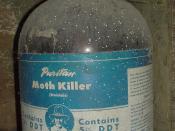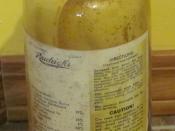Malaria or DDT: Which is the lesser evil?
What would you expect to be some of the leading causes of death among some of the poorest countries of the world? Heart disease? Malnourishment? AIDS? Here's one you may not have said: Malaria. Every year, as many as 2.7 million people die as a result of malaria, a disease contracted from mosquitos, which thrive in the swampy wetlands that these countries do not have the money to control. One suggested solution for this problem is to spray these wetlands with an insecticide known as DDT (short for dichlorodiphenyltrichloroethane). So what's the problem? In 1973 DDT was banned by the U.S as a result of the publication of Silent Spring, a best-seller written by Rachel Carson which outlined the possibility of DDT entering the food chain and eventually concentrating in larger animals and causing reproductive dysfunctions, such as too thin an eggshell in some species of bird.
The ban in the U.S. was the first of many. Soon, many of the more wealthy nations of the world, the nations capable of DDT production, placed bans on the chemical for fear of the threat to the environment that it could cause. Lifting the ban on DDT could save millions of lives across the world.
If the ban on DDT were to be lifted, not only would millions of lives be saved from malaria, but from cancer as well. If DDT were sprayed on crops, crop production would increase and consumer prices would decrease. According to the World Cancer Association, if in the U.S. alone, consumption of fruits and vegetables dropped by 10 percent because of higher prices, the result would be as many as 26,000 more cancer deaths every year (Pappas). So conversely, many lives could be saved if consumer cost declined.


